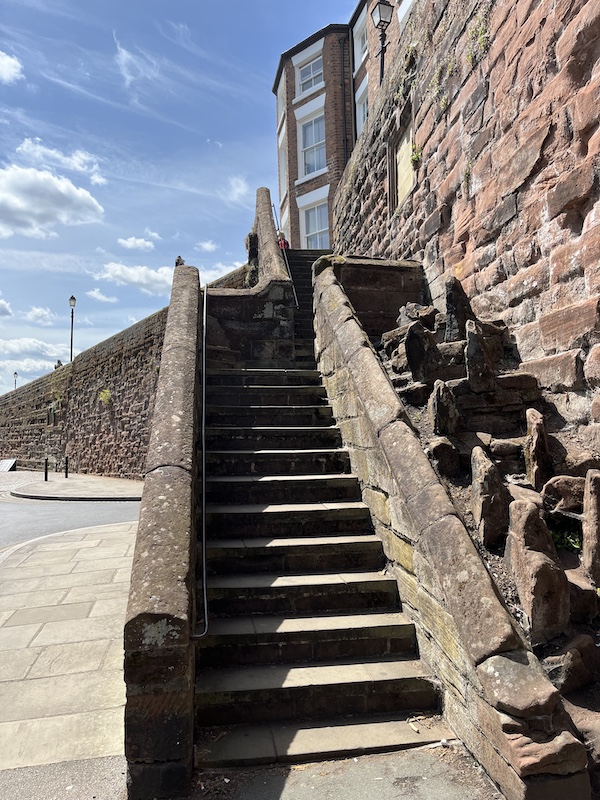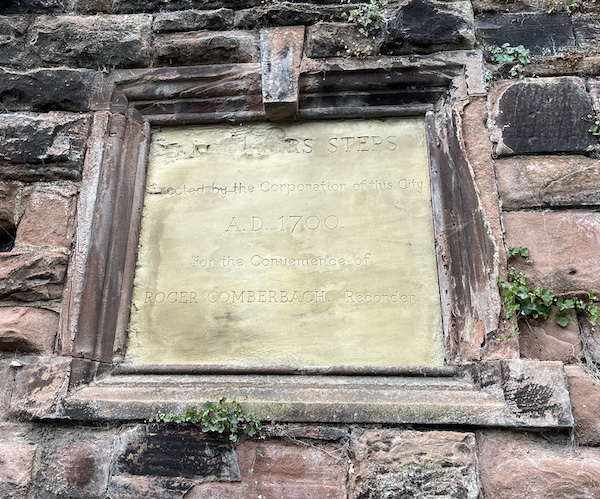Recorder's Steps
Roger Comberbach was born in Nantwich in 1666 and died in 1720. He had a career as a lawyer, writer and poet, and was the city recorder of Chester from 1700 until his death in 1720. The city recorder was the chief judge, elected by the assembly to be chairman of the quarter sessions. He resided in a house on the southern side of the city walls, overlooking the River Dee and the area now known as the The Groves.
In 1690 the assembly agreed that a stairway should be installed near the back door of Roger Comberbach’s house, leading down to the riverside area. The steps are said to have been installed for the recorder’s convenience to save him a detour via the Bridge Gate.

Today a stone plaque installed into the city wall at the side of the steps can still be seen. It reads:
“RECORDERS STEPS
Erected by the Corporation of this City
A.D. 1700.
For the Convenience of
ROGER COMBERBACH. Recorder.”
Whilst the comemmorative plaque says that the steps were erected in the year 1700. The original steps were replaced after Richard Comberbach’s death so the accuracy of the information in the plaque is questionable as it may be referring to an earlier set of steps.

The stone steps that are in situ today (2025) consist of two flights of stone steps and are protected as a listed building. During recent inspections the steps had shown signs of movement and are therefore currently propped to make them safe for continued use by the public. The local authority website reports that a plan is being drawn up for investigation work and to also investigate a section of the city walls to the east of the steps at the same time – “as their construction is unknown and to protect masonry from future erosion.”
